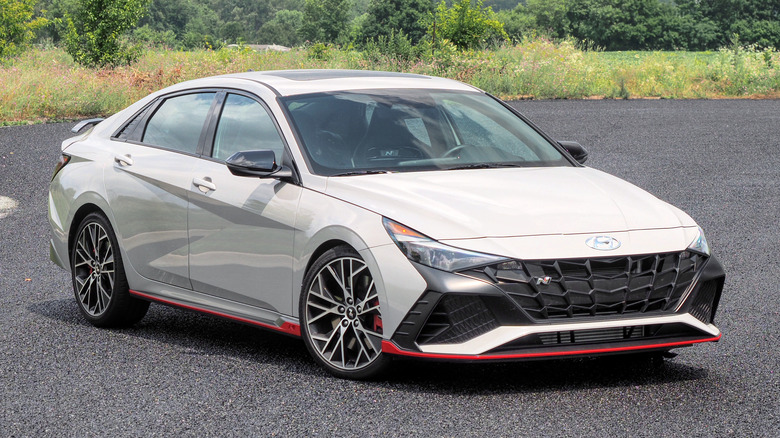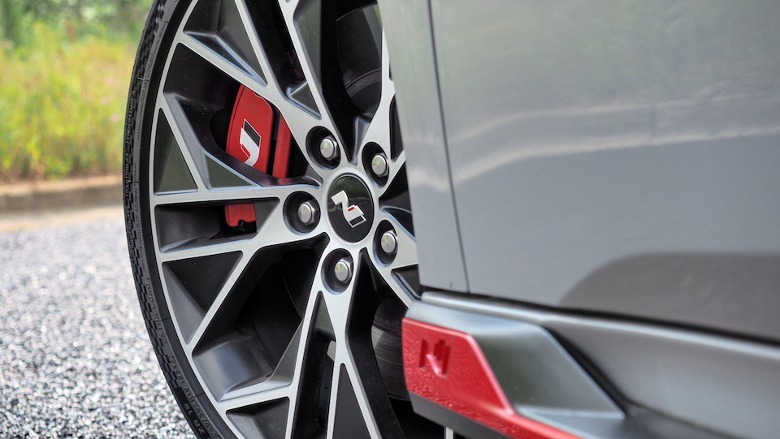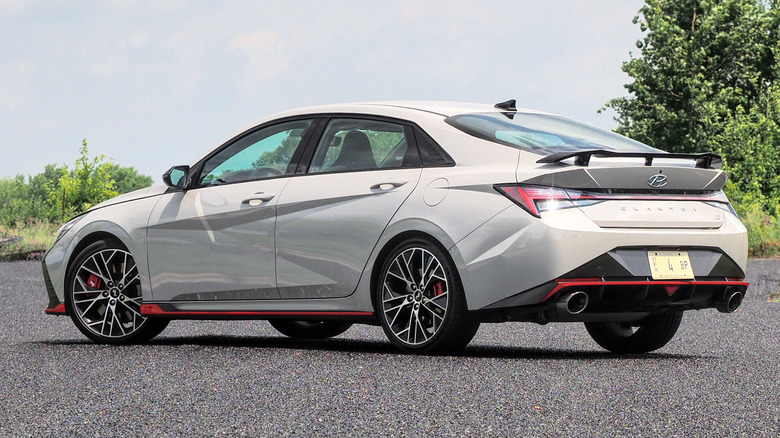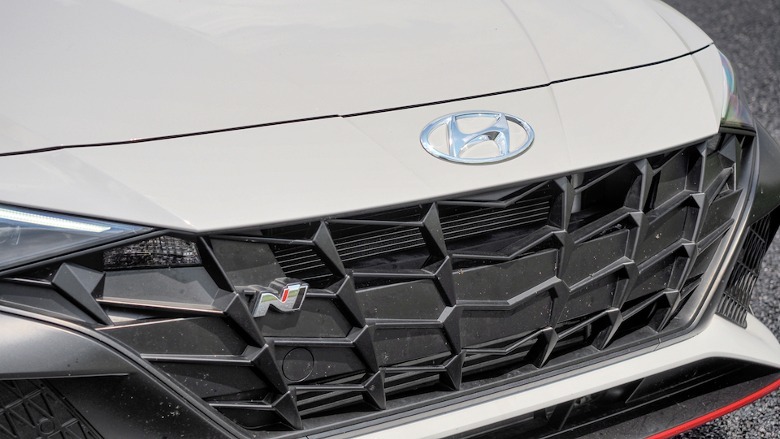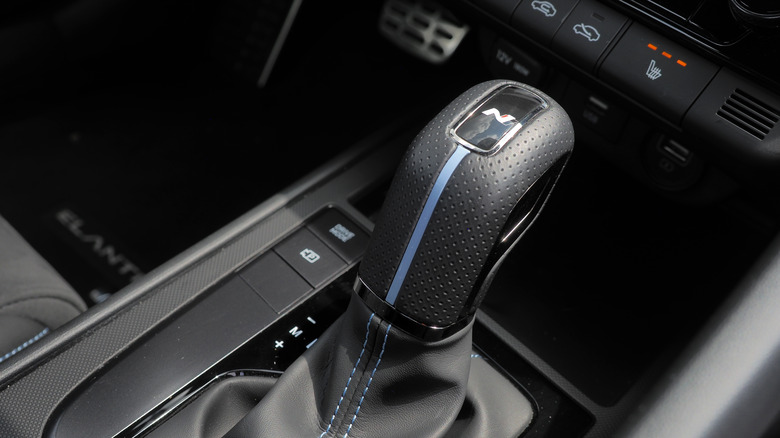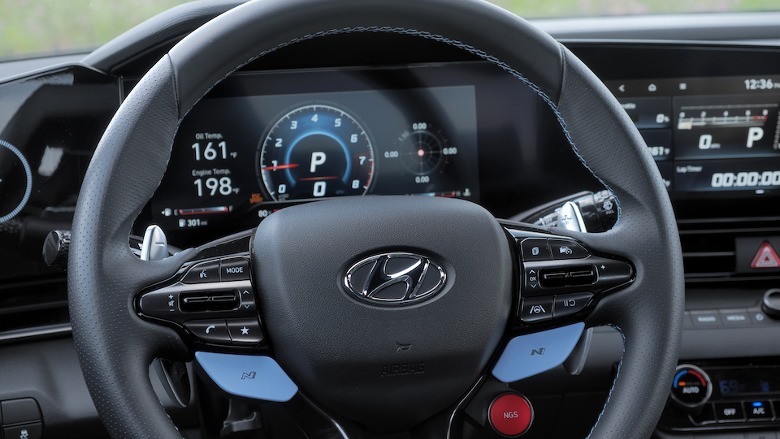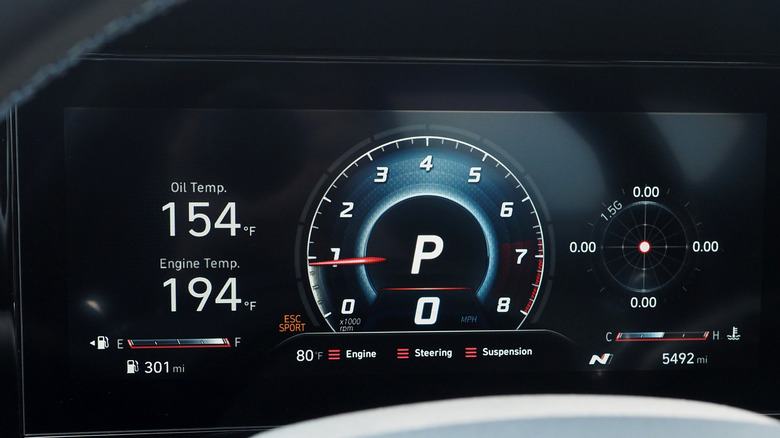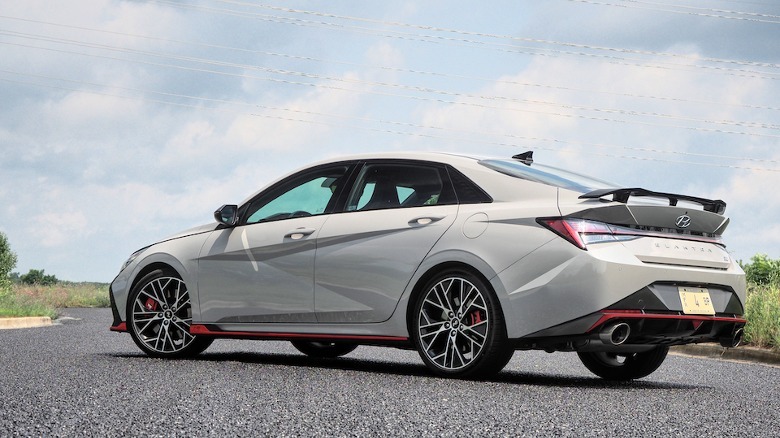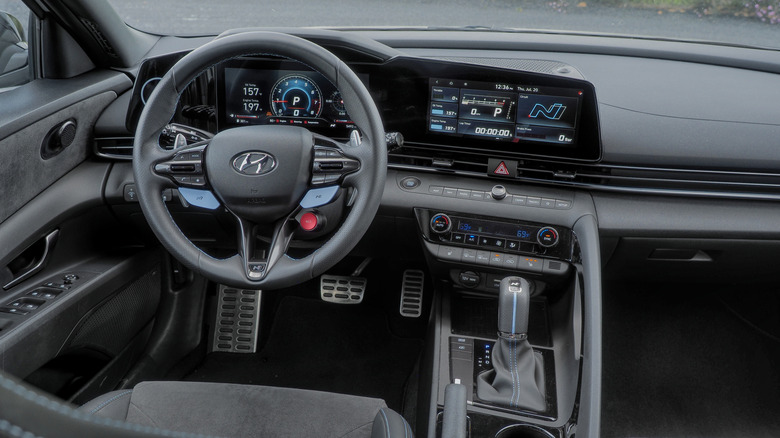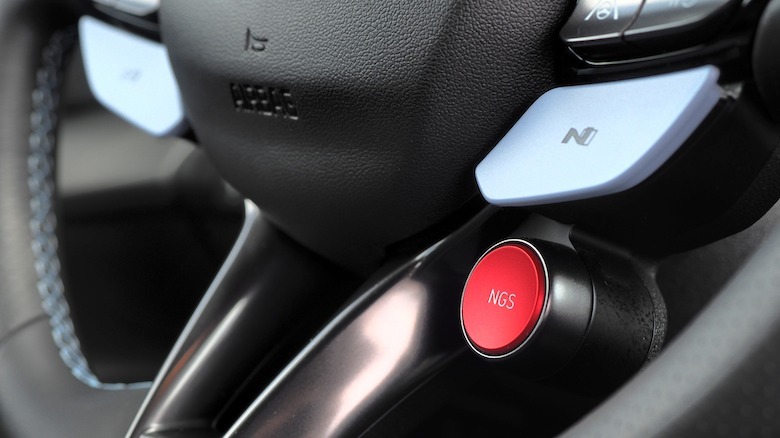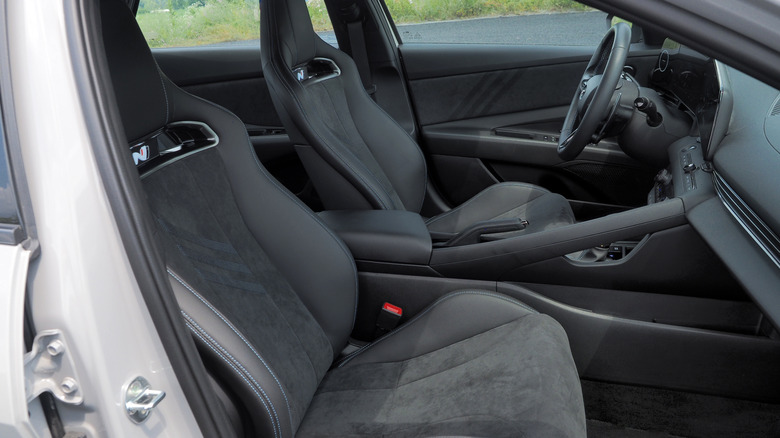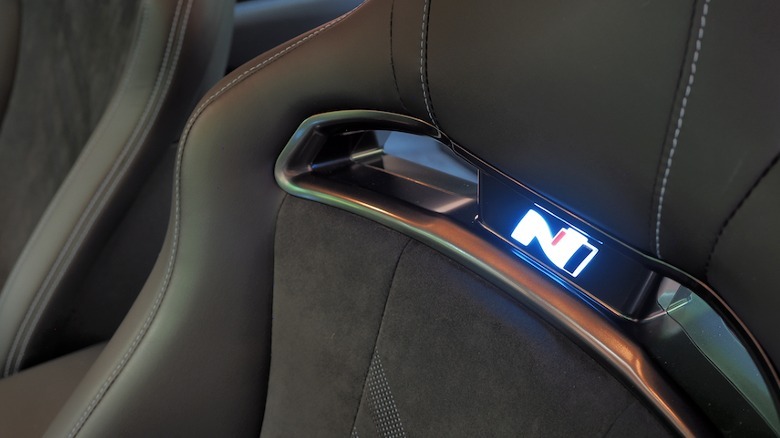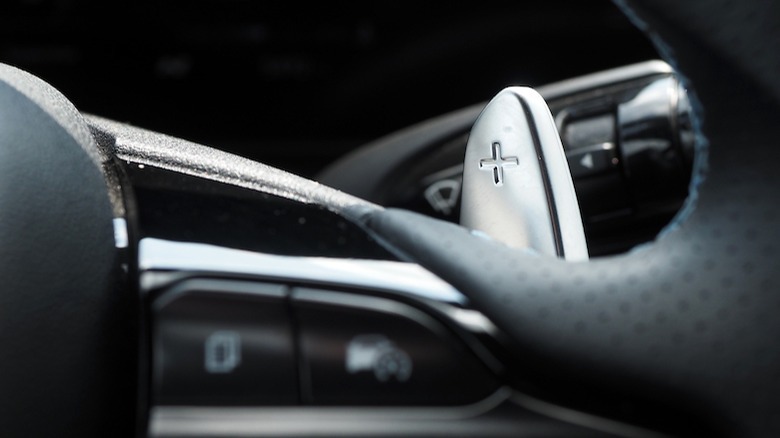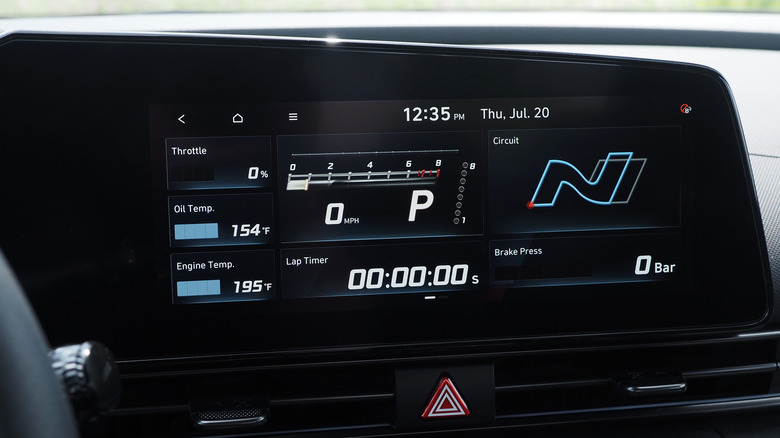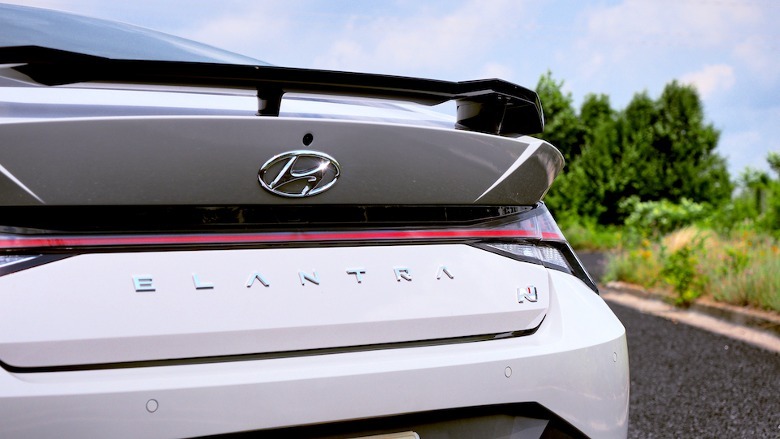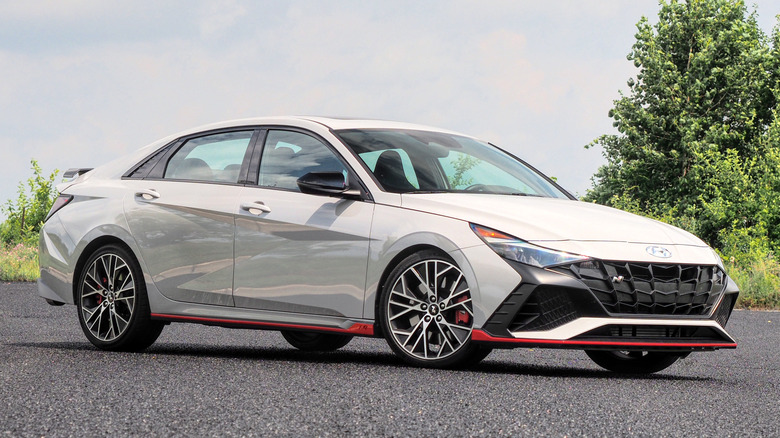2023 Hyundai Elantra N Review: The Practical Miata Alternative
- Turbo 2.0L is powerful enough for genuine fun
- Great suspension setup delivers comfort and poise
- Surprisingly affordable
- The practicality of a compact sedan
- Some underwhelming materials in a dark, sober cabin
- No wireless smartphone projection or adaptive cruise
- Aesthetics may not be to everyone's taste
There's an old adage in affordable enthusiast car circles that "the answer is always Miata." After all, little has come to encapsulate the idea of attainable purist performance like Mazda's long-running MX-5 series. What is the grin-hunter on a budget to do when they need five seats and — dare it be said — practicality from their plaything?
Turns out, Hyundai might well have the answer. Its N series of performance models may not have the lengthy legacy of the Miata, but the 2023 Elantra N doesn't seem to be letting a truncated track record hold it back. Neither does a starting price only a little north of $30K.
The standard Elantra is an earnest, low-cost compact sedan with unexpectedly striking looks. With a sticker that kicks off under half the average selling price of a new car in the U.S., it's also one of the cheapest four-door options. Once Hyundai's N division is done with it, however, the change is borderline astonishing.
Nobody will call the Elantra N subtle
The Elantra N certainly looks the part. Hyundai hasn't really messed with a working formula, and while the undoubtedly in-your-face body kit and contrasting red trim doesn't necessarily fill every onlooker with joy, there's at least no confusing it for a regular Elantra.
19-inch alloy wheels with Michelin Pilot Sport 4S summer tires are standard, and look just swell, with red brake calipers peeking out through the spokes. Hyundai then adds a rear spoiler and dual exhaust outlets, together with a rear diffuser and some side-sill extensions. Splashes of bright red play nicely against the Cyber Gray of this review car, and even if it's not to your taste, the fact that you're getting all this from $32,650 (plus $1,095 destination) is faintly astonishing.
LED headlamps, daytime running lamps, and taillamps are all standard. In fact, Hyundai has left very little down to personal taste, apart from arguably the most important detail, of course.
One engine, and a choice of transmissions
There's a single engine: a specially tuned 2.0-liter turbocharged four-cylinder, with 276 horsepower and 289 pound-feet of torque. As standard, it's paired with a 6-speed manual transmission, but for $1,500 more, you can have an 8-speed wet dual-clutch automatic. That also adds paddle shifters to the steering wheel.
The decision between stick or auto is always going to be a contentious one. Hyundai's 6-speed is grand, but there's a lot to like about the 8-speed DCT, too. Unsurprisingly the Elantra N is fastest, from 0-60 mph, with the automatic — that's just par for the course these days.
Rowing your own gears is something special, undoubtedly, but while the Elantra N is never going to be as demure as a standard Elantra, nor is it permanently set to beast-mode. The standard electronically-controlled suspension plays a big role, there, with adjustable levels of softness that allow the performance sedan to do a serviceable impression of a more sedate, comfort-minded car.
The magic is in the suspension flexibility
Regardless of transmission type, there's an electronic limited-slip differential as standard, helping push power to the wheel with the most traction. Multi-link independent rear suspension is also standard, plus a rear chassis brace. For slowing, there are 14.2-inch front and 12.4-inch rear ventilated brake rotors.
Hyundai's drive mode situation isn't quite as complex as what you'd find in a modern BMW M car, but you certainly aren't short on options. Eco and Normal are at the placid end, though the Elantra N is never outright slow (nor its suspension squishy). Still, there's compliance enough that you won't need to divert to a chiropractor in cases of rough asphalt.
Hit the Drive Mode button, though, and you find Sport mode, which cranks things up into more aggressive levels. Then there's the most potent N mode, summoned with one of the two programmable "N" buttons on the steering wheel.
All the grins
Different graphics on the 10.25-inch driver's instrument cluster show what mode you're in: effectively color scheme changes in Eco, Normal, and Sport, but a complete redesign in N mode. It looks more like something you'd expect from a race car binnacle, with priority given to metrics like engine and oil temperature.
Are Elantra N owners taking their budget performance cars to the track? Here's hoping, because I suspect it would be a fun plaything to throw around without worrying about other traffic, pedestrians, or speed traps. The soundtrack certainly punches above its weight — glorious pops and gurgles amid a loud, but not ugly burble.
Shiny and red among the blue dashboard highlights is the NGS — or "N Grin Shift" — button, effectively the Elantra N's boost trigger. Stab that and, regardless of what drive mode you're in, you'll get 20 seconds of the most aggressive performance. That includes 10 horsepower more than normal, perfect for taking advantage of an overtaking opportunity (or just being silly on a stretch of open road).
It's definitely not slow on that straight line, nor do corners dampen the Elantra N's spirit. Beautifully weighted steering and fast, responsive handling make the best of whatever twisties you might have on hand. Better still, there's every encouragement to wring the heck out of the turbo-four: much like a Miata, this isn't a case of an overpowered car being underutilized on public roads.
A dark cabin with decent standard equipment
Inside, the Elantra N's cabin is a dark and sober place to find yourself. There's only one interior color scheme — black leather combined with black microsuede — and the blue contrast stitching doesn't come close to lifting it. I'm not asking for bright ivory leather, but some textured aluminum wouldn't hurt.
N-branded front bucket seats are standard, and mighty supportive. They have illuminated "N" plates, just in case you want to backlight your neck, and manual adjustment. Heating is also standard alongside the dual-zone climate control. A leather-wrapped steering wheel and transmission shifter knob also get N-branding, and Hyundai gets bonus points for its quality-feeling metal paddle shifters.
The front is spacious, but the rear bench suffers a little on legroom thanks to the bowed backs of the front seats. More off-putting is the extent of the hard black plastic: No great surprise, given where Hyundai has allocated its budget here, but still not exactly pleasing to the touch.
At least it feels sturdy in most places, though if you drop the rear seats down to expand the 14.2 cubic-feet of trunk space — fine, if not outstanding — you'll find an anti-roll bar spanning the gap. Good for reinforcement, not so much for transporting bulky items.
Some tech oddities
A 10.25-inch infotainment touchscreen is standard, with wired Apple CarPlay and Android Auto. Hyundai's reluctance to upgrade to wireless versions continues to bemuse, especially as it throws in a wireless phone charging pad as standard. Dual USB ports are in the front, along with a Bose eight-speaker audio system and SiriusXM.
Hyundai Blue Link is standard — with a three year subscription — as is the automaker's digital key system, though the latter only works on Android phones and not iPhone. The Elantra N also gets a tilt-and-slide sunroof, though oddly only if you spec for the DCT gearbox.
As we've seen on other cars from the automaker, the list of safety equipment that comes at no extra cost is fulsome. Forward collision-avoidance assist and blind spot collision-avoidance assist, rear cross-traffic collision-avoidance assist, and reverse parking sensors are all standard. Lane-keeping and lane-following assist are also included, which only makes the absence of adaptive cruise control more of a head-scratcher.
2023 Hyundai Elantra N Verdict
Perhaps Hyundai's Highway Driving Assist (HDA) is considered too sensible for the 2023 Elantra N. Maybe Hyundai felt too embarrassed that its sports-sedan-on-a-budget actually returns reasonable economy numbers (for the segment, at least). 20 mpg in the city, 30 mpg on the highway, and 23 mpg combined are far, far from what an Elantra Hybrid can deliver, but then again, no enthusiast has ever grabbed eagerly for the keys to that gas-sipper.
The Elantra N's keys are, in contrast, mighty appealing. While it may be less powerful than a Honda Civic Type R, it's also around $10K cheaper. The price delta between the Hyundai and a new GR Corolla is only $3K, but good luck trying to find Toyota's hot hatch in-stock and at MRSP. Most important, I'm not entirely sure it's any less engaging than either of those rivals, at least not to the extent that's permissible on public asphalt.
It leaves the 2023 Elantra N something of a star in the sports sedan category, and one for which Hyundai should be lauded (even as it does grand things in electrification and earnest family SUVs). The biggest worry, indeed, is that — like the Veloster N, which was recently discontinued — Hyundai might decide it makes less sense in a lineup increasingly dominated by EVs. The keen driver on a budget should probably get in while the going is good.
